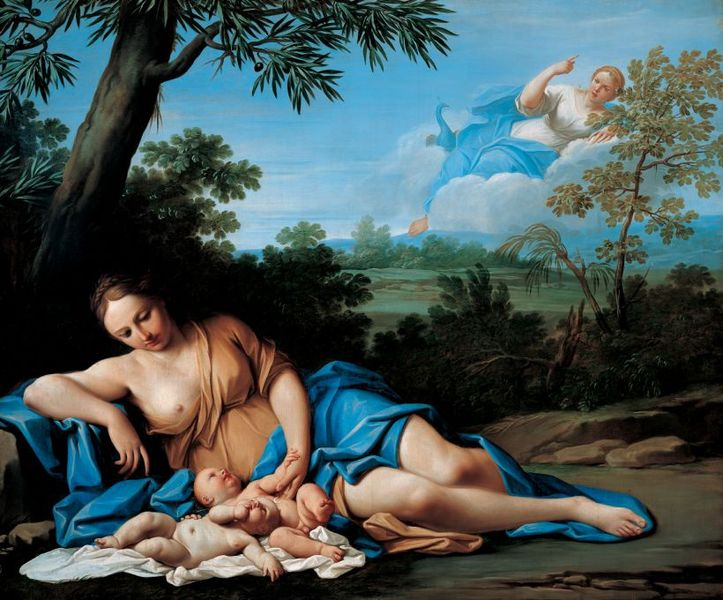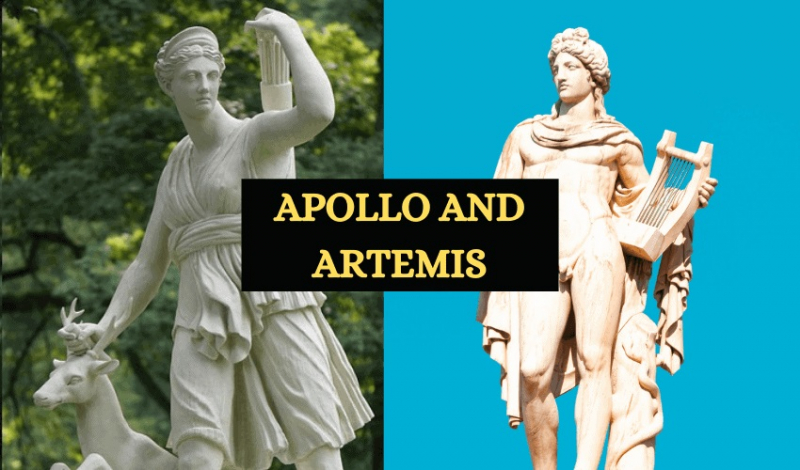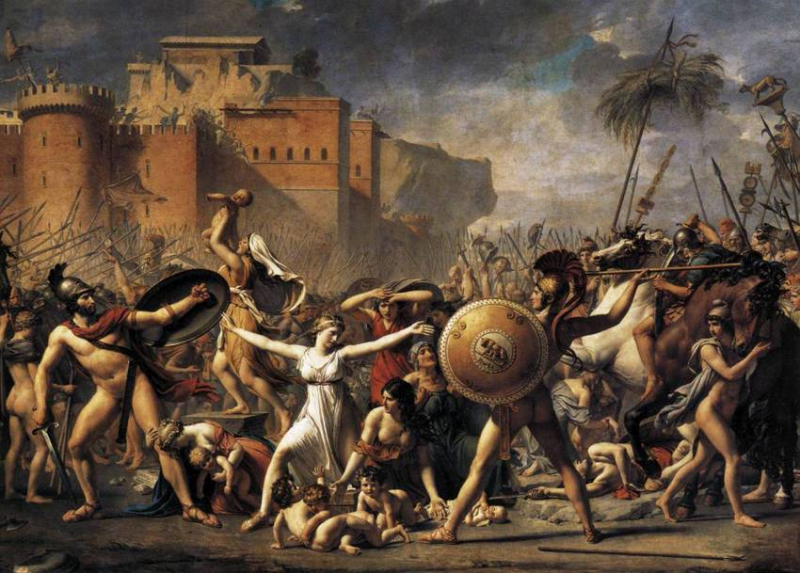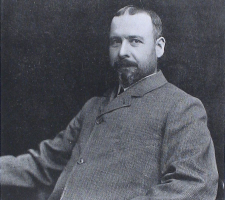Top 9 Interesting Facts about Leto
Leto was a Titan in Greek mythology, the mother of the god's Apollo and Artemis, and the daughter of Coeus and Phoebe. One of the most beloved and revered ... read more...deities in ancient Greece, she was the goddess of childbirth. Many temples were constructed to worship her, and the majority of the ladies who were either preparing to conceive or already had children would worship her for her affiliation. Like all the gods of antiquity, Leto is filled with fascinating historical information. The most interesting facts about Leto are outlined in this article.
-
First of all, one of the most interesting facts about Leto is she was the Goddess of motherhood and modesty. Leto was the daughter of Coeus and Phoebe, the first generation of Titans. While Coeus is only mentioned as her father by Callimachus, Ovid, and the Homeric hymn to Delian Apollo, no information about her mother is provided. She also had a sister named Asteria, who, according to Apollodorus and Hesiod, was crucial in helping Leto give birth to her children. Her cult was well-known across Greece and Asia Minor since she was the mother of two important Olympians, Artemis and Apollo, and spent the majority of her time there as a Titan.
The Titan goddess of modesty and benevolence was Leto. She is referred to as "gentlest in all Olympus" in Hesiod's Theogony because she is constantly kind and patient with people, both gods, and humans. In particular, when it came to parenthood and child care, she would provide a helping hand to anyone in need. But various authors claim that she had a short fuse and could be wrathful and cruel to people who upset her.
Because most of the goddess' myths center on the birth of her children and her strong relationship with them, the goddess is also frequently linked to childbirth and motherhood. The passage from Aelian's On the Nature of Animals that gives us the first indication that this is the case connects Leto with Eileithyia, the goddess of childbirth because they both revere Ichneumons as their sacred animal.

Photo: https://mythologysource.com/l 
Photo: https://www.greeklegendsandmyths.com/ -
The event of Zeus impregnating Leto is one of the most interesting facts of Leto’s life. Zeus admired Leto's beauty and found her style of life to be charming. Although he was married to his sister Hera, Leto held more allure for him. At the very least, he desired to be physically intimate with her. To achieve his goal, he persuaded and charmed Leto; unfortunately, Leto later becomes pregnant.
Hera, Zeus' envious wife, then chased the goddess aggressively to stop her from having illicit offspring. She even sent Ares and Iris to keep watch over the continent and the islands, and she threatened every city and territory Leto approached, preventing her from seeking sanctuary. Leto was prevented from giving birth to her twins as a result of her curse. Leto could not locate a single island or piece of land that was sturdy enough for her to give birth.
To prevent Leto from giving birth in tranquility, the entire planet was enveloped in clouds. When Zeus created a whole island for Leto, she was able to give birth to Apollo and Artemis.

Photo: https://gamek.vn/ 
Photo: https://gamek.vn/ -
One of the most interesting facts about Leto is she gave birth to her children on a barren and floated on an island. Zeus sent Boreas, the North Wind, to blow Leto out to sea when he discovered her being pursued by Python. Due to Hera's curse, Leto was unable to both stands on land and swim. Zeus had prepared for her a floating island called Delos. She pleaded with the island when she first arrived for safety. Delos appeared arid and dismal since it was covered in rocks. If the island aided her, she would transform the desolate island into a lovely spot. As soon as she touched the island, it stopped floating, rested on the ocean floor, and sprouted lush green woods. Amphitrite, Dione, Rhea, Themis, and Ichnaea were all with her. Leto was able to give birth to her children in a secure location. First, she gave birth to Artemis.
Eileithyia, the goddess of childbirth, is rumored to have been present during childbirth but was kept in the dark by Hera in Olympus. Leto was in labor for nine days due to her absence, which was keeping her from giving birth. Iris was dispatched by the goddesses to deliver Eileithyia, with the promise of a magnificent necklace adorned with golden threads. Apollo was ultimately permitted to be born on the ninth day, as soon as Eileithyia arrived, and was instead fed ambrosia and nectar by Themis than breastfeeding.

Photo: https://digitalcollections.nypl.org/ 
Palm where Leto gave birth to Apollo and Artemis - Photo: https://www.theartistontheroad.com/ -
Leto was compelled to leave Delos after giving birth and travel to Lycia with her kids. She was searching for some fresh water after a long journey when she spotted a clear pool of water in the distance where many of her fellow people were picking reeds, osiers, and bulrush. The people forbade her as she tried to approach the pool to get some water from it. Even worse, they posed a hazard of contaminating the crystal-clear water with their unkempt hands and feet. Additionally, they brought their livestock to the spring so they could get water. She was unwanted, and they wanted her to leave.
Leto felt enraged at this point and raised her hands to heaven, cursing the peasants to become tethered to this river. Since then, the dumb frogs have been muddying the pools in which they jump and dive.

Photo: https://www.greeklegendsandmyths.com/ 
Photo: https://historycollection.com/ -
Leto was connected to many sacred symbols because she had encountered many things during her life. She developed attachments to practically everything she came across.
She and all the symbols connected to her started to be worshipped by the Greeks. For instance, roosters, wolves, and weasels were worshipped since they assisted Leto in navigating the dense forest while she was pregnant.
She would always cover herself with the veil, which was also revered. In all of her representations, including statues and paintings, Leto is shown as a nurturing mother figure. Nearly all of her representations include her wearing a veil and occasionally lifting it. The most typical representation of her shows her sitting on her lap with both of her kids. She is occasionally shown with her kids spread out on both sides. Apollo and Artemis, her children, are never shown without her. Additionally, it demonstrated her femininity, modesty, and maternal side.
She was also identified with the dates and palm trees because she had leaned on them during her difficult times. They also stood for success, peace, fertility, and racial unification.

Photo: https://greek-myth.fandom.com/ 
Photo: https://app.emaze.com/ -
The tale of Niobe states that Leto and Niobe quarreled and had a bad relationship because of how many kids each of them had. Niobe frequently boasted that she had more children than Leto, who was also made to travel the world, although being less fortunate. All of this came to an end when the goddess, once, overpowered by fury, heard the poisoned words of Niobe. Leto flew to Cynthus' highest point and provoked Apollo and Artemis into murdering all of her offspring. As they quietly approached them, Artemis slaughtered the daughters while Apollo killed the sons. Everything took place in seconds.
Leto's followers were being driven away from Niobe's altars because Niobe was boasting about how blessed she was and how the goddess had been reduced to having no offspring at all. Niobe, however, was ultimately the one who was childless and hence was silent, unmoving, and stone-like. A similar tale claims that Niobe, in her desperation, traveled to Mount Sipylus, where she wept until she turned to stone. After that, her husband Amphion attempted to destroy the temple of Apollo in retaliation but was murdered by the god's arrows and was sentenced to spend eternity in Hades as a result of being among those who made fun of Leto and her kids.
After this tragedy, everyone feared calling on Leto's wrath and increased their devotion to the goddess and her offspring.

Photo: https://vi.wikipedia.org/ 
Photo: https://www.thoughtco.com/ -
Leto provided Apollo and Artemis with nurturing, food, and kindness despite the difficult upbringing they experienced. They valued their mother and did everything they could to support her. As they had become strong individuals, they would get retribution on those who had bothered their mother.
Leto and her infants used to be killed by the earth dragon Python, which Hera used to send. Apollo decided to go pursue the Python monster soon after his children were born to protect his mother. Even though Python was a defender of the ground and a child of Gaia, Apollo was a success.
Leto's problems didn't end here, though. Hera expressed the same level of hatred for Leto's offspring as she did for Leto herself as her children grew up among the gods. But Leto and her daughter Artemis have been the targets of Hera's wrath the most. When Artemis and Apollo grew older and the Python was unable to slay Leto, Hera decided to send a giant in his place.
Hera dispatched a giant by the name of Tityos. While traveling to Delphi to see her son Apollo, who was now the city's ruler, Leto was sexually assaulted by the giant. When their mother was sexually assaulted, Artemis was in Delphi visiting Apollo. To shield his mother, Apollo confronted the behemoth. Zeus inflicted the giant the same punishment as Tityos after Apollo beat the giant by firing a lightning bolt at the ground and sending him to Tartarus.

Photo: https://symbolsage.com/ 
Photo: https://www.thecollector.com/ -
Along with her kids Apollo and Artemis, Leto had fought in the ten-year Trojan War. This is also one of the most interesting facts about Leto. Leto had returned to Zeus' good graces, much to Hera's chagrin. She later played a supporting part in Greek mythology, but she made multiple appearances. She belonged to Lycia, and the city was aligned with Troy, thus she was fighting on their side.
She allegedly confronted Hermes, the messenger god, on the battlefield, but Hermes declined to engage in combat with her since she represented a risk to those who were married to Zeus. He then ran away, telling her to go ahead and boast about her victory.
She was both a fighter and a savior throughout the conflict, which was crucial. Aeneas was reportedly healed by the goddess and Artemis, who also helped them return the Trojan hero to his previous strength and splendor.

Photo: https://www.britannica.com/ 
Photo: https://smart-plots.com/ -
Many temples in Ancient Greece were devoted to Leto, and she was greatly venerated there. She was loved and respected for her kindness. They revered Leto as a protector of mothers, children, and families as well.
Although her worship was particularly strong in Lycia, the Goddess's homeland, her religion was primarily concentrated on Anatolia's southern coast. South of Letoon, Xanthos, Lycia, a few kilometers lay the sanctuary of Leto. There, she and her twins were revered as domestic goddesses, national goddesses, and tomb guardians.
She purportedly had a temple in Egypt that was joined to a floating island in Buto named "Khemmis," which also housed a temple dedicated to an Apollo like Egyptian deity that Greek interpreters identified as such. There, the cobra-headed deity of Lower Egypt known to the Greeks as Leto was revered.

Photo: https://turkishmuseums.com/ 
Photo: https://www.worldhistory.org/






























